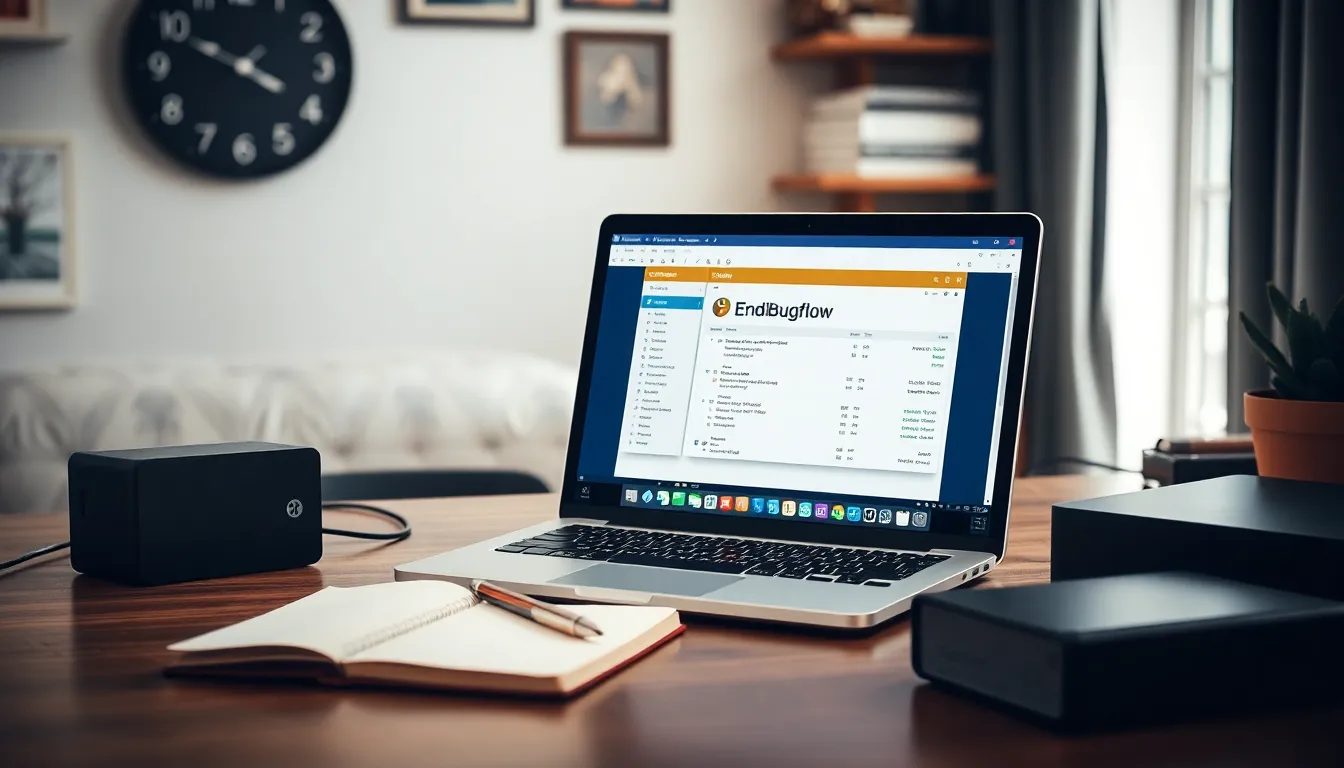Table of Contents
ToggleUpdating software might not top anyone’s list of thrilling activities, but when it comes to Endbugflow, it can feel like a superhero upgrade. Picture this: your PC is running smoother, faster, and with fewer bugs than a summer picnic. Who wouldn’t want that?
Understanding Endbugflow Software
Endbugflow software plays a crucial role in optimizing user tasks on a PC. Designed for efficiency, it enhances productivity by streamlining workflows. This software integrates various tools that assist users in managing their projects effectively. Frequent updates introduce new features and bug fixes, further improving the software’s overall functionality.
Performance stability represents one of Endbugflow’s primary strengths. Users often experience reduced crashes and environmental inconsistencies after updates. Recent versions showcase advancements that aim at increasing speed, leading to quicker task completions. Additionally, security enhancements during updates safeguard user data against emerging threats.
Compatibility is vital in today’s multi-device world. Endbugflow maintains compatibility with diverse operating systems and hardware specifications. Users benefit from continued support for various configurations, ensuring that their systems harness the software’s full potential.
Documentation accompanying Endbugflow updates provides valuable insights. These resources detail changes made, benefits gained, and instructions for best practices. Understanding these changes allows users to utilize features to their advantage effectively.
User communities often discuss experiences and tips related to Endbugflow. Engaging with these communities encourages knowledge sharing and troubleshooting. This connection fosters a supportive environment that enhances user understanding and satisfaction.
The importance of keeping Endbugflow updated cannot be overstated. Each update contributes to a more robust, secure, and functional user experience. Embracing the latest versions empowers users to maximize their productivity and streamline their workflows efficiently.
Preparing for the Update

Preparing for an update ensures a smooth transition to the latest version of Endbugflow. This careful approach minimizes the chances of encountering issues during the installation.
System Requirements
Check the system requirements before proceeding. Endbugflow typically needs a minimum of 4 GB of RAM and at least 500 MB of available disk space. Ensure your operating system is compatible; it usually supports Windows versions 10 and later. Other requirements may include specific graphics or processor capabilities, which can vary with each update. Documentation outlines the latest specifications, providing users with the information they need to assess compatibility.
Backup Your Data
Backing up data safeguards against potential loss during the update. Users can take several approaches to backup, such as using external hard drives or cloud storage solutions. These methods ensure critical files remain intact even if unforeseen issues arise. Create copies of relevant documents, settings, and configurations to facilitate a smooth restoration process if necessary. Consider scheduling regular backups to simplify ongoing data protection efforts. Keeping backups updated helps maintain security and retrievability, making future updates more manageable.
Step-by-Step Guide to Update Endbugflow Software
Updating Endbugflow software ensures optimal performance, security, and access to new features. Follow this guide to simplify the update process.
Checking for Available Updates
Start by opening the Endbugflow application on the PC. Navigate to the main menu, then select the “Help” option. From there, choose “Check for Updates.” The software will search for any available updates. If an update is found, a notification will indicate the version and details of the changes. Users should review this information to understand what enhancements and fixes are included in the new version.
Downloading the Latest Version
After confirming an update is available, proceed to download the latest version. Click on the download link presented in the update notification. This action initiates the downloading process. The file size typically ranges from 300 MB to 600 MB, depending on the specific version. Users should ensure they have sufficient disk space, as previously indicated, before the download completes. Once downloaded, locate the installation file in the designated downloads folder.
Installing the Update
Begin installation by double-clicking the downloaded installation file. A prompt will appear, asking for permission to make changes to the device. Click “Yes” to continue. The installation wizard guides users through the steps. Review the terms of service before accepting them. The installation generally takes between 5 to 10 minutes, depending on the system’s performance. After completion, users receive a confirmation message indicating that the update was successful, and they can now restart the application to access the updated features.
Troubleshooting Common Issues
Updating Endbugflow software sometimes leads to unexpected challenges. Users may encounter issues during installation or verification of updates.
Installation Errors
Installation errors can arise due to several factors. Insufficient disk space often prevents a smooth installation process. Users should ensure at least 500 MB of free space is available. Incorrect system requirements might also trigger errors; check Windows versions to confirm compatibility, as only versions 10 and later support Endbugflow. Network issues during the download phase can result in incomplete installations. Restarting the download or verifying the internet connection typically resolves these problems. If a specific error message appears, searching the Endbugflow support site will often yield helpful solutions.
Update Verification
Verifying the update can also pose difficulties after installation. Users must navigate to the Help option within Endbugflow to confirm successful updates. If the updated version doesn’t display correctly, restarting the application usually resolves the issue. Frequent errors may signal the need for additional troubleshooting steps. Contacting customer support may provide further insights into persistent problems. Checking the application’s version against the latest available on the Endbugflow website ensures everything is up-to-date. Regularly validating versions enhances overall software function and user experience.
Updating Endbugflow software is essential for maintaining a high-performing and secure PC environment. By following the outlined steps and preparing adequately, users can enjoy enhanced functionality and productivity. Regular updates not only introduce new features but also ensure compatibility with the latest operating systems and hardware.
Backing up data before initiating the update process is crucial for safeguarding important files. If any issues arise during the update, troubleshooting steps can help resolve them efficiently. Staying proactive with software updates will lead to a smoother user experience and maximize the benefits of Endbugflow.







